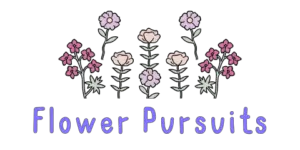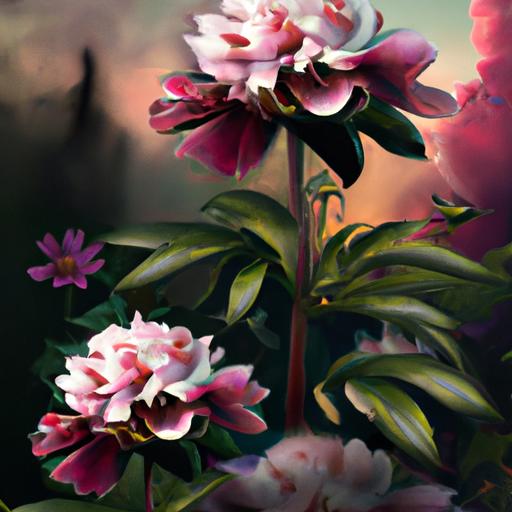Peonies and poppies, two beautiful flowers that can often be seen together in flower beds, gardens, and bouquets.
But are they the same thing? Many people use the terms interchangeably, but there are some surprising differences between these two flowers.
In this article, we’ll explore the differences between peonies and poppies, their histories, and how they are used in gardening and bouquets.
So if you’ve ever wondered if peonies and poppies are the same, keep reading to find out the answer!
Table of Contents
Short Answer
No, peonies and poppies are two different types of flowers.
Peonies are a type of flowering shrub that is native to parts of Asia and Europe and has large, showy flowers.
Poppies are a type of flowering plant that are native to Europe, Asia, and North America and have small, delicate flowers.
Overview of Peonies
Peonies are a type of flowering plant in the genus Paeonia.
They are known for their large, beautiful blooms of multiple petals that come in a variety of colors, including white, pink, red, and lavender.
Peonies are traditionally grown in gardens and are a popular choice for bouquets, adding a unique and stunning look to any floral arrangement.
They are also popular for adding beauty and fragrance to home decor.
The plants are perennial, meaning they will come back year after year with minimal maintenance required.
Peonies are also long-lived, with some specimens living and blooming for over a century.
The flowers come in several different varieties including herbaceous, tree, and intersectional.
Peonies can range in size from a few inches to up to four feet in diameter.
Different varieties of peonies may have different bloom times, with some blooming in early spring and others blooming in late summer.
Overview of Poppies

Poppies are a genus of flowering plants that belong to the family Papaveraceae.
They are known for their bright, cheerful colors, often coming in shades of red, pink, and white.
Poppies are usually small, single-petalled flowers, with their petals arranged in a cup-like shape.
The unique shape of the poppy flower has made it a popular choice for use in floral arrangements and other decorative items.
In addition to their attractive appearance, poppies are also known for their medicinal properties.
The opium poppy, for example, is used to produce a variety of medications, including painkillers.
Poppies are also a source of food, with the seeds being used to make a variety of dishes, as well as being eaten raw.
Differences Between Peonies and Poppies
When it comes to the differences between peonies and poppies, there are several key distinctions that set them apart.
Peonies are a type of flowering plant in the genus Paeonia, while poppies are a genus of flowering plants in the family Papaveraceae.
Peonies are large, round flowers with multiple layers of petals, while poppies are small, single-petalled flowers.
Peonies come in a variety of colors, such as pink, red, white, and yellow, while poppies typically come in shades of red, pink, and white.
In terms of size, peonies are much larger than poppies; the average peony is around 4-6 inches in diameter, while the average poppy is only a few inches in diameter.
Peonies also have a longer bloom time than poppies, with blooms lasting up to 6 weeks, while poppies often only last for a few days.
When it comes to their stems, peonies are woody and thick, while poppies are thin and hollow.
Peonies typically have a strong, sweet scent, while poppies have a subtle, earthy scent.
Peonies are also known for their longevity, with some species living up to 100 years, while poppies are annuals, meaning they only live for one season.
Finally, peonies and poppies have different growing requirements.
Peonies are best grown in cooler climates, while poppies prefer warmer temperatures.
Peonies are a hardy plant that can survive in most soils, while poppies thrive in well-drained, loamy soils.
Peonies need full sun to partial shade, while poppies need full sun to thrive.
Overall, peonies and poppies are two very different plants and should not be confused as the same type of flower.
While they may share a similar shape and color palette, they have distinct characteristics that set them apart.
History of Peonies

Peonies have a long and storied history, dating back to Ancient Greece and Rome.
Peonies were believed to be a symbol of wealth and prosperity, and were often used in decorations for weddings.
Over the centuries, peonies have been used for medicinal purposes, as well as for their ornamental beauty.
In Chinese culture, peonies are associated with prosperity and wealth, and are often gifted to newlyweds.
In Japan, peonies are a symbol of courage and bravery, and are often represented in artwork.
Peonies are also popular in Europe, where they symbolize good fortune and friendship.
The meaning of the peony has changed over time, but it has always been a symbol of beauty, wealth, and prosperity.
History of Poppies
Poppies have been a source of fascination and admiration for centuries.
The poppy flower has a long history, with references to them in ancient texts from as far back as 3000 BC.
In ancient Greece, poppies were seen as a symbol of sleep and were used in medicines.
Poppies were also used in various religious ceremonies in ancient times, with some cultures believing that poppies had magical powers.
The poppy flower is perhaps best known for its connection to World War I.
During the conflict, poppies became a symbol of hope and remembrance for fallen soldiers.
This came about after the famous poem “In Flanders Fields” was published in 1915.
The poem described poppies growing in a battle-scarred field, a poignant reminder of the lives lost in the war.
Since then, the poppy flower has become an international symbol of remembrance for those who have died in combat.
The red of the poppy is often used to commemorate the bloodshed of war, and many countries have their own versions of the poppy flower.
In the United States, the red poppy is used as the official symbol of remembrance for those who have died while serving in the military.
Poppies are also widely used in literature and art.
From the classic poem “In Flanders Fields” to the paintings of Vincent Van Gogh, poppies have been used to create powerful works of art that evoke emotion and stir the imagination.
Today, poppies are often seen as a symbol of hope, remembrance, and peace.
They are a reminder of the sacrifices made by those who have served in the military, and a symbol of the power of resilience and strength in the face of adversity.
Growing Peonies and Poppies

Peonies and poppies are both beautiful flowers that can add color to any garden.
But while they may look similar, they are actually two different types of flowers and require different care and attention.
Peonies are classified as a type of flowering plant in the genus Paeonia, while poppies are a genus in the family Papaveraceae.
When it comes to planting and caring for these two flowers, there are some important differences.
Peonies are usually larger, round flowering plants with multiple layers of petals that come in a variety of colors.
They should be planted in well-drained soil in a sunny spot.
They can also benefit from a mulch of organic material, such as bark, to keep their roots cool and moist.
Peonies are also relatively easy to care for, as they dont require much in terms of fertilization or pruning.
Poppies, on the other hand, are smaller, single-petalled flowers that come in shades of red, pink, and white.
Poppies should be planted in a sunny, well-drained spot, and they prefer to be grown in sandy soil.
They should also be watered deeply and regularly, as these plants are prone to wilting in dry soils.
Fertilization and pruning are also important for keeping poppies healthy and blooming.
Overall, peonies and poppies are two distinct flowers that should not be confused as the same type of flower.
While they may share some similarities in shape and color palette, they require different care and attention.
With the right conditions and care, both of these flowers can be the perfect addition to any garden.
Uses for Peonies and Poppies
Peonies and poppies have a variety of uses, from decoration to medicinal purposes.
Peonies, for example, are often seen as a symbol of prosperity and wealth and are popularly used for decorative purposes, such as in floral arrangements or as decorations for special occasions.
They are also known for their medicinal properties, with some cultures believing that consuming peonies can help boost ones immune system and help them live longer.
Poppies, on the other hand, have a much more utilitarian purpose.
For centuries, poppies have been used to produce opium and other narcotic drugs.
The poppy plant is also a popular source of food, with poppy seeds often used in baking and as a garnish for dishes.
Poppy extracts are also used in some pharmaceuticals, while poppy petals are sometimes used in perfumes and cosmetics.
Final Thoughts
It can be easy to confuse peonies and poppies at first glance, but it’s clear that these two flowers are in fact different.
While they share a similar shape and color palette, they are actually from different genera and have distinct features.
Peonies are large, round flowers with multiple layers of petals, while poppies are small, single-petalled flowers.
Both flowers have a long and interesting history, and they can be used for many different purposes.
Now that you know the difference between peonies and poppies, why not go out and plant some of both in your garden?

